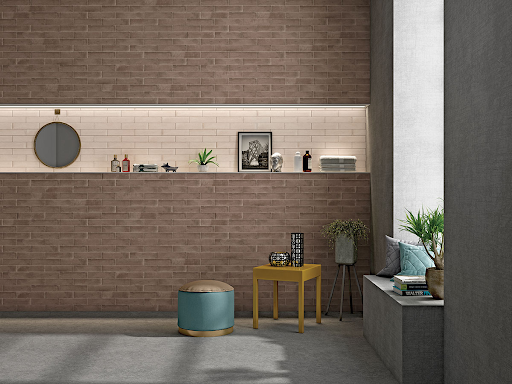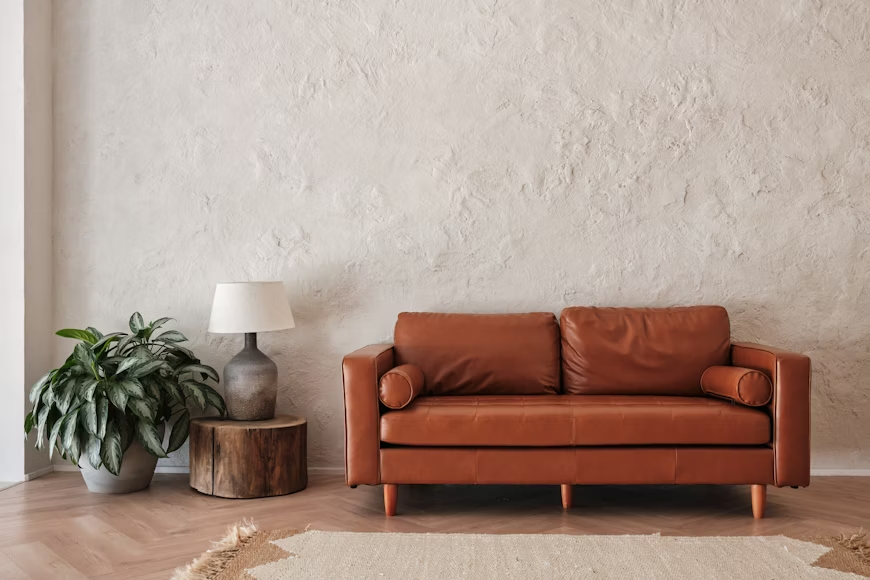Wall tiles play a very important role in enhancing the overall look and feel of kitchens, bathrooms, and interior accent walls. The clean lines, their polished surfaces, and the wide range of design options make them a preferred choice in both modern and traditional Indian homes. Wall tiles are not only stylish but also considered a good choice due to their low-maintenance nature, which enhances their long-term value.
However, even the most durable tiles would need consistent care to maintain their finish and functionality over time. Dust accumulation, moisture exposure, and grime build-up, especially in high-use areas, can gradually affect both the tile surface and the grout. In this post, we will outline practical and effective methods for maintaining wall tiles in detail.
Know Your Wall Tile Finish
Different tile finishes require different cleaning methods, and it is essential to know the wall tile finish before proceeding with the cleaning process. In kitchens, glossy wall tiles are common because they’re smooth and easy to wipe clean. A quick pass with a damp cloth usually takes care of splashes or stains.
Matte wall tiles, on the other hand, are more suited for spaces like hallways or living areas where a softer look is preferred. These may need more gentle scrubbing to lift dust from their textured surface.
Many homes use outdoor tiles near the entrance or on the side walls of the home’s outer structure. Surfaces near entrances or side walls often collect oil, mud, or tyre marks. These areas may need a stronger rinse and occasional degreasing. Keeping this in mind, here are the various ways you can take care of your wall tiles for long-lasting style and strength.
- Use Mild Cleaning Agents
Most people think the cleaning solution needs to be strong enough to remove difficult stains. However, wall tiles, especially those with artistic finishes, can start fading after reacting with harsh chemicals.
Sometimes, a mix of warm water and mild soap can yield promising results. If stains are stubborn, consider using baking soda and a soft brush instead of a strong solvent. It might take slightly longer, but your grout and glaze will continue to shine bright.
- Watch the Grout Lines
Even if your wall tiles look brand new, the grout between them can make the space feel dated. White grout tends to turn grey, while grey grout gathers dust quickly. Eventually, they become obvious and give off an old, unclean look in light-coloured kitchens and bathrooms.
You should clean grout once every two weeks if the tiles are in high-traffic areas, such as showers or behind cooktops. All you need is an old toothbrush dipped in a baking soda paste. For deeper grime, try mixing vinegar and water and let it sit on the grout before you scrub it off.
Some tile designs, like Dowth Sun or Frementa, from premium suppliers like Simpolo Tiles and Bathware offer better edge-finishing. This makes cleaning the joints easier without eroding the corners.
- Seal the Tiles Properly
Most people think sealing is only for flooring. However, if your wall tiles are in a splash zone, such as above the basin or behind the stove, they also benefit from sealing. Porous tiles like natural stone need sealing every 1-2 years. Even some ceramic tiles have unsealed grout that can absorb oil and moisture.
Always test a small patch before applying a sealant to the entire wall. Wait 24 hours and see if the colour darkens or if the finish changes before proceeding with the entire wall.
- Fix Early and Start Small
At the initial stage, you might ignore a chipped corner or minor discolouration. However, this initial sign is the indicator that a problem is starting and will spread. If left untreated, it will either become impossible to clean or require an expensive renovation.
If you notice a tile has shifted or a corner has cracked, remove the piece, clean up the area, and reinstall the tile using tile adhesive. Well-known manufacturers such as Simpolo Tiles and Bathware offer Smart Code Technology, which allows you to scan a tile and check for compatible fillers or replacement options. What that means is you can match old tiles with newer ones, even if the model number changes.
- Avoid Water Collection on Tile Surfaces
Tiles do not mind water, but hard water can react with the adhesive and weaken it over time. This is especially true for vertically placed tiles. Always keep an eye out for water dripping onto your tiled kitchen wall from the countertop, and keep a dry cloth nearby in high-moisture areas, such as basin backsplashes or shower corners. These are small care habits that protect your wall tiles from slow, unnoticed damage.
Conclusion
Wall tiles need less upkeep than most surfaces, but they still require regular care. Even the most durable tile will show signs of wear if ignored. A quick daily wipe helps keep dust, smudges, and watermarks under control, especially in areas like kitchens, corridors, or stairwells. For deeper grime, a weekly clean with a mild tile-safe cleaner can restore the original shine or texture. And every month, it’s worth checking for chipped corners, loose edges, or grout stains. Catching small issues early ensures your wall tiles stay looking good and don’t require repairs later.










